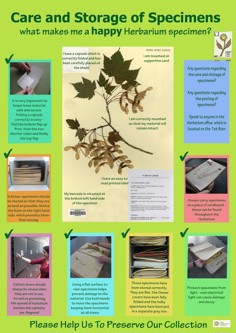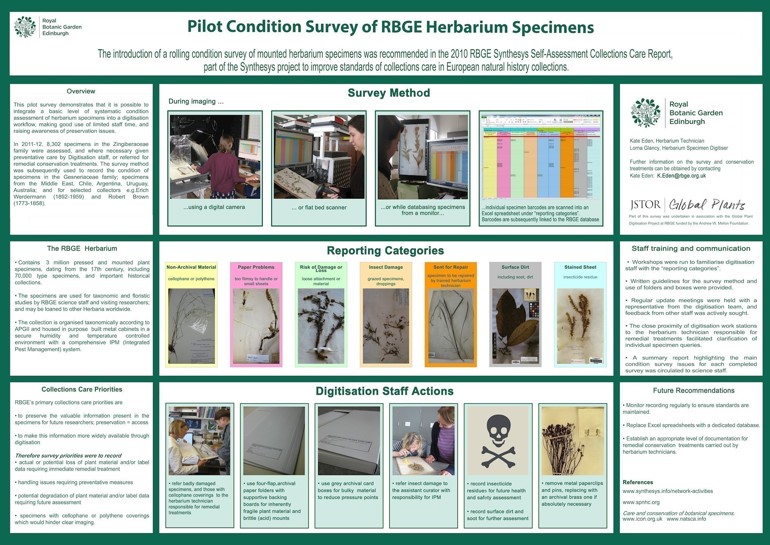We have a duty to provide a safe and secure environment for all of our collections.
To protect our herbarium specimens from loss or damage, we have specifically designed storage and strict specimen handling guidelines. The condition of the collection is monitored, and repairs to specimens are carried out to appropriate conservation standards.
The sections below include information on
- agents of deterioration
- safe storage environment
- specimen handling
- mounting materials
- condition surveying
- repair techniques
Agents of deterioration
Over time, herbarium specimens may become damaged due to:
- a major disaster such as fire or flood,
- insect damage.
- poor storage environment
- careless handling
- breakdown of the materials used to prepare them





